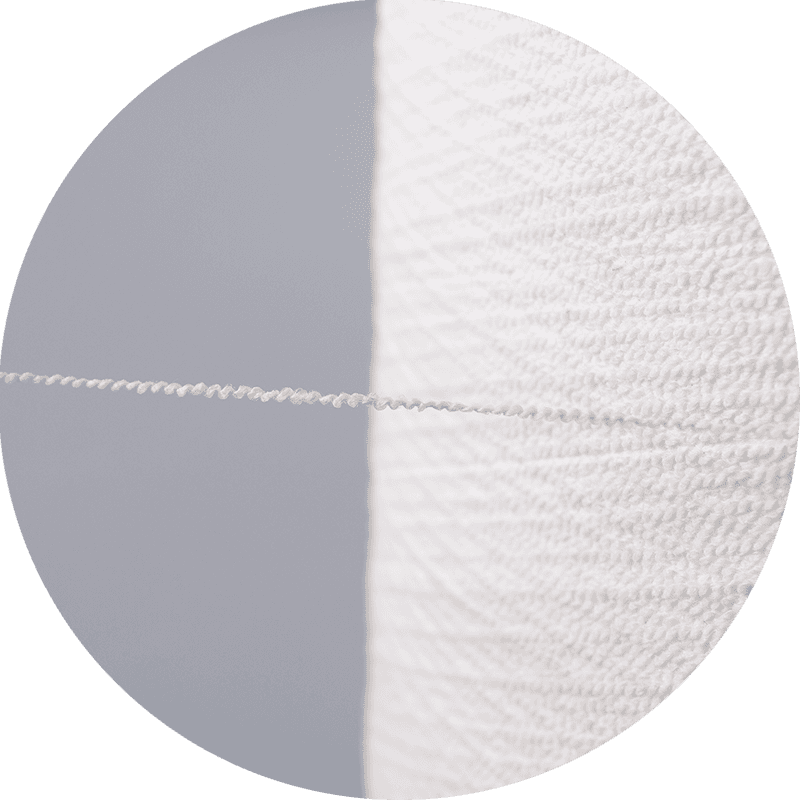With the improvement of environmental awareness and the growth of demand for functional fibers, doped dyed polyester yarn is becoming one of the popular materials in the textile industry due to its excellent performance and green manufacturing process. Compared with the traditional post-dyeing process, doped dyeing technology combines pigments with polyester raw materials simultaneously in the spinning stage, realizing the original color of the yarn from the source, with outstanding advantages such as high color fastness, energy saving and environmental protection, and long-lasting color.
So, in what fields is this advanced polyester yarn mainly used? This article will analyze its core application value in modern textiles in detail from four aspects: home textiles, clothing, industrial fabrics and functional fabrics.
1. Home textile products: stable color and long-lasting use
In home textiles such as curtains, sofa fabrics, bedding, etc., there are high requirements for the color fastness, sun resistance and washability of fabrics. Doped dyed polyester yarn can significantly reduce the fading problem caused by sun exposure and washing because its color is liquid-dyed.
Curtains and sunshades: Keep bright colors for a long time, suitable for places with strong light such as balconies and floor-to-ceiling windows.
Sofa fabrics: Friction-resistant, not easy to fade, improve the overall service life and beauty of furniture.
Bedding fabrics: Uniform color, no need to worry about different colors caused by washing, in line with the pursuit of stability of high-end home textiles.
2. Clothing fabrics: Environmentally friendly dyeing and finishing, suitable for sensitive skin
Modern clothing has higher standards for environmental protection, comfort and color expression. The doped dyed yarn is not washed and printed, and there is no dye residue, which is more suitable for products such as baby clothes, underwear and sportswear.
Sports and leisure clothing: High color fastness and strong UV resistance, suitable for outdoor clothing, swimwear, yoga clothes and other usage scenarios.
Children's clothing and underwear: Adopt environmentally friendly dyeing process, do not contain harmful chemical additives, and are safer to wear close to the body.
Work uniforms and uniform cloth: Long-term color stability, reduce replacement frequency, and reduce corporate costs.
3. Industrial fabrics: strong weather resistance, adaptable to extreme environments
Industrial textiles, such as advertising fabrics, awning fabrics, safety protection fabrics, etc., often need to have strong weather resistance and mechanical strength. Traditional dyed yarns are easily affected by fading, which affects functionality and aesthetics, while doped dyed polyester yarns are particularly outstanding in this regard.
Outdoor advertising fabrics/light box fabrics: high light resistance and UV resistance, long-lasting and clear colors.
Industrial filter fabrics/safety vests: by doping with fluorescent masterbatches or reflective particles, night warnings or special process functions can be achieved.
Automotive interior/luggage fabrics: wear-resistant, light-resistant, and environmentally friendly, meeting the stringent standards of high-end vehicles or luggage.
4. Functional fabrics: combined with auxiliaries to achieve multifunctional applications
Doped dyeing technology can also be compounded with other functional masterbatches, such as adding functional ingredients such as UV protection, flame retardant, and antibacterial, to achieve "one-step molding" multifunctional fiber materials.
UV-resistant fabrics: suitable for sun protection clothing, outdoor tents, sun umbrellas, etc.
Flame retardant fiber: widely used in aviation seats, subway cars, hotel linens and other fields that require fire safety.
Antibacterial medical fabrics: suitable for protective equipment such as hospital sheets, surgical gowns, masks, etc.
With its "dye before spinning" process advantage, doped dyed polyester yarn improves yarn performance while achieving green production, reducing water consumption and pollution, which is in line with the current industrial development direction under the background of "double carbon". It can not only be widely used in home textiles, clothing, industrial fabrics and functional fabrics, but also can be customized according to demand Functional formulas to achieve higher value-added textile products.
With the tightening of environmental protection policies and the increasing market demand for differentiated fabrics, doped dyed yarn will undoubtedly become one of the key materials in the upgrading of the modern textile industry. For brands pursuing "environmental protection + high performance + personalization", this will be an important tool for building core competitiveness.
